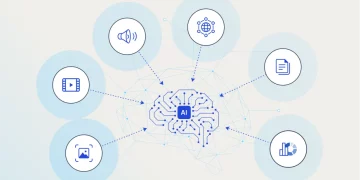Introduction
In the era of artificial intelligence (AI), deep learning has emerged as one of the most powerful and transformative tools across multiple sectors, including healthcare, finance, education, and transportation. However, as the influence of AI systems grows, so too does the urgency of ensuring that they operate fairly, without bias or discrimination, while maintaining the high levels of efficiency that modern applications demand.
This article explores the complex intersection of fairness and efficiency in deep learning. It examines the ethical imperatives driving the conversation, the technical limitations and innovations in current models, and the challenges and progress made toward developing AI systems that are both just and high-performing. The central question—how can deep learning maintain fairness without compromising efficiency?—is more than a technical dilemma; it is a socio-technical challenge that requires holistic thinking, interdisciplinary collaboration, and constant vigilance.
The Evolution of AI Ethics
AI ethics is not a new concern. From the earliest conceptions of autonomous systems, questions of moral responsibility, bias, and control have shaped how societies envision intelligent machines. However, the urgency of these issues has grown as deep learning models have moved from research labs into everyday life.
Early debates in AI ethics focused on abstract issues like machine consciousness or the “AI singularity.” Today, the conversation has shifted toward more immediate and practical concerns: Can facial recognition systems avoid racial bias? Can loan approval algorithms avoid discriminating based on gender or socioeconomic status? Can AI in healthcare ensure that underrepresented populations receive accurate diagnoses?
As these questions suggest, the ethical dimension of AI is no longer a theoretical exercise but a critical aspect of design, deployment, and governance.
Defining Fairness in Deep Learning
Fairness in AI refers to the absence of bias, discrimination, and unjust outcomes when AI systems make decisions. But fairness is a multifaceted and context-dependent concept, which complicates efforts to define and implement it technically.
Types of Fairness
- Demographic Parity – Requires that outcomes be equally distributed across different demographic groups.
- Equalized Odds – Seeks equal true positive and false positive rates across groups.
- Predictive Parity – Ensures that predictive accuracy is equal for different groups.
- Individual Fairness – Individuals who are similar in relevant ways should receive similar outcomes.
- Counterfactual Fairness – Decisions should not change if a sensitive attribute (e.g., race or gender) is altered in a counterfactual scenario.
Each of these definitions reflects a different ethical intuition, and it is often impossible to satisfy all fairness criteria simultaneously. This has led to trade-offs, where developers must choose which form of fairness aligns best with a given context.
Sources of Unfairness
Unfairness in deep learning models can arise from several sources:
- Biased Training Data – If historical data reflects existing inequalities, the model may learn and perpetuate them.
- Labeling Bias – Annotators may unintentionally inject bias during the labeling process.
- Model Complexity – High-dimensional models may obscure discriminatory behavior.
- Deployment Context – The environment in which an AI system operates can introduce or amplify bias.
Understanding these sources is crucial for mitigating unfairness and building more equitable systems.
The Pursuit of Efficiency
Efficiency in deep learning is typically measured by performance metrics like accuracy, precision, recall, latency, and computational cost. These indicators are essential in real-world deployments, where users and businesses demand fast, reliable, and cost-effective AI solutions.
Why Efficiency Matters
- Scalability – Efficient models are easier to deploy at scale.
- User Experience – Fast response times improve usability and trust.
- Energy and Cost – Reducing computational demands is critical for environmental sustainability and accessibility.
- Competitive Advantage – Companies with more efficient models can offer better products at lower cost.
However, optimizing purely for efficiency often leads to performance maximization without adequate regard for fairness. A high-performing model that systematically disadvantages certain groups is not truly “efficient” in the broader ethical sense.
Fairness vs. Efficiency: An Apparent Trade-Off
One of the central challenges in ethical AI is the perceived tension between fairness and efficiency. Mitigating bias often involves additional computation, data collection, or constraints on model behavior that can reduce traditional performance metrics.
Sources of Trade-Off
- Model Constraints – Imposing fairness constraints can limit a model’s ability to optimize for accuracy.
- Data Balancing – Creating balanced datasets may require discarding useful data or collecting more expensive samples.
- Training Complexity – Fair algorithms can require more complex loss functions or optimization strategies.
- Evaluation Overhead – Fairness metrics require additional evaluation, slowing down development cycles.
While these trade-offs are real, they are not insurmountable. In many cases, the perceived conflict can be addressed with thoughtful design and targeted innovation.
Strategies for Fair and Efficient Deep Learning
Numerous techniques have emerged to bridge the gap between fairness and efficiency. These strategies can be classified into three broad categories: pre-processing, in-processing, and post-processing methods.
Pre-processing Techniques
These methods aim to transform the data before training:
- Reweighting – Assign different weights to samples to balance representation.
- Data Augmentation – Generate synthetic data to increase fairness.
- Adversarial Debiasing – Use adversarial networks to remove sensitive attributes from the data representation.
In-processing Techniques
These methods modify the training process:
- Fair Loss Functions – Incorporate fairness constraints directly into the loss function.
- Regularization – Penalize unfair outcomes as part of model optimization.
- Gradient Reversal – Use gradients to minimize the influence of sensitive features during training.
Post-processing Techniques
These methods adjust outputs after the model is trained:
- Threshold Adjustment – Modify decision thresholds for different groups.
- Calibration – Align confidence scores across groups.
- Fair Ranking Algorithms – Reorder model outputs to promote fairness in top-K selections.
Each of these approaches has trade-offs and is best suited to specific contexts. Combining techniques is often necessary to achieve both fairness and efficiency.

Real-World Case Studies
Healthcare
In healthcare, biased models can lead to life-threatening consequences. For instance, an algorithm used to predict which patients should receive extra care was found to underestimate the needs of Black patients because it used healthcare cost as a proxy for health need.
A revised version of the model, which included more representative features and fairness constraints, maintained a high level of accuracy while significantly reducing racial bias.
Finance
Credit scoring algorithms must avoid discrimination while accurately predicting default risk. Lenders have adopted fairness-aware machine learning techniques, such as fairness-constrained logistic regression, to comply with legal mandates without compromising model utility.
Criminal Justice
Predictive policing and risk assessment tools like COMPAS have been criticized for racial bias. Post-deployment audits and policy changes have helped mitigate some of the issues, but achieving fairness while preserving public safety remains a complex challenge.
Regulatory Frameworks and Ethical Guidelines
Governments and organizations worldwide are developing regulations and ethical guidelines to ensure AI systems are fair and accountable.
Notable Frameworks
- EU AI Act – Proposes strict requirements for high-risk AI systems, including transparency and non-discrimination.
- OECD Principles on AI – Emphasize inclusive growth, human-centered values, transparency, and accountability.
- IEEE Ethically Aligned Design – Provides recommendations for embedding ethical considerations into AI development.
- U.S. Blueprint for an AI Bill of Rights – Advocates for safe and effective systems, algorithmic discrimination protections, and user control.
These frameworks encourage (and in some cases, require) developers to assess and report fairness impacts, providing a regulatory push toward ethical AI.
Challenges and Open Questions
Despite progress, several major challenges remain:
- Dynamic Environments – Fairness constraints designed for static data may fail in dynamic or adversarial contexts.
- Intersectionality – Ensuring fairness across multiple, intersecting demographic axes is complex.
- Explainability – Making fairness decisions interpretable to users and regulators remains difficult.
- Cultural Differences – What constitutes fairness can vary across societies and legal systems.
- Resource Inequality – Smaller organizations may lack the resources to implement fairness-aware AI.
These challenges highlight the need for continued interdisciplinary research and stakeholder engagement.
Future Directions
The future of fair and efficient deep learning lies in the convergence of multiple advances:
- Federated Learning – Can enable data privacy while preserving fairness across decentralized datasets.
- Causal Inference – Understanding causal relationships can improve fairness interpretations and interventions.
- Hybrid Models – Combining symbolic reasoning with neural networks may offer more transparent and controllable AI systems.
- AutoML for Fairness – Automating the search for fair models can democratize access to fairness-aware AI.
- Human-in-the-loop Systems – Incorporating human oversight can help contextualize fairness decisions and detect nuanced harms.
As these technologies mature, the hope is that fairness and efficiency will be seen not as competing goals but as complementary facets of responsible AI.
Conclusion
The dual pursuit of fairness and efficiency in deep learning is not merely a technical challenge—it is a reflection of societal values, institutional responsibilities, and human rights. While the tension between these goals is real, it is not intractable. Through thoughtful design, innovative techniques, and robust regulation, it is possible to build AI systems that are both high-performing and just.
In the years ahead, the success of AI will not be measured solely by how fast or accurate it is but by how well it serves all members of society, without bias, exclusion, or harm. The ethical progress of AI is not a destination but a journey—one that requires vigilance, collaboration, and a steadfast commitment to fairness in every line of code.











































